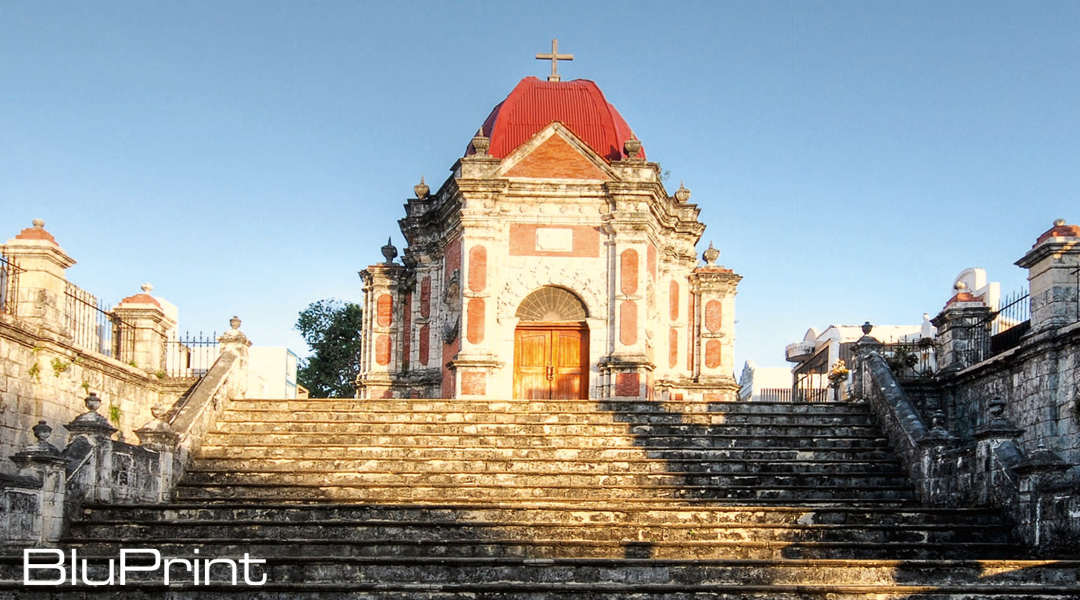
Death and New Life: The historic San Joaquin Camposanto
Often, dawn is the best time to see architecture. The light just so and the hustle and bustle of everyday life have not yet begun in most places. When BluPrint visited some of the historic churches in Iloilo province, it was a stroke of luck that we visited the San Joaquin Camposanto, several hours south of Iloilo City, as the sun came up to reveal a perfectly blue sky. Finished in 1892, 23 years after San Joaquin Church was built, San Joaquin Camposanto holds a historic funerary chapel or capilla and maintains its historic sightline to the sea.
Traveling from Iloilo City, one will pass the camposanto before arriving at San Joaquin Church. Situated in a typical Spanish style, on a small rise facing the sea, the camposanto rises from a striking entrance archway with an iron grill gate less than one meter from the national highway. The carved archway stands guard for a flat plaza bordered with asymmetrical rectangles of grass at the base of a set of terraced stone steps. The capilla at the top of the steps is one of Iloilo’s historic gems.
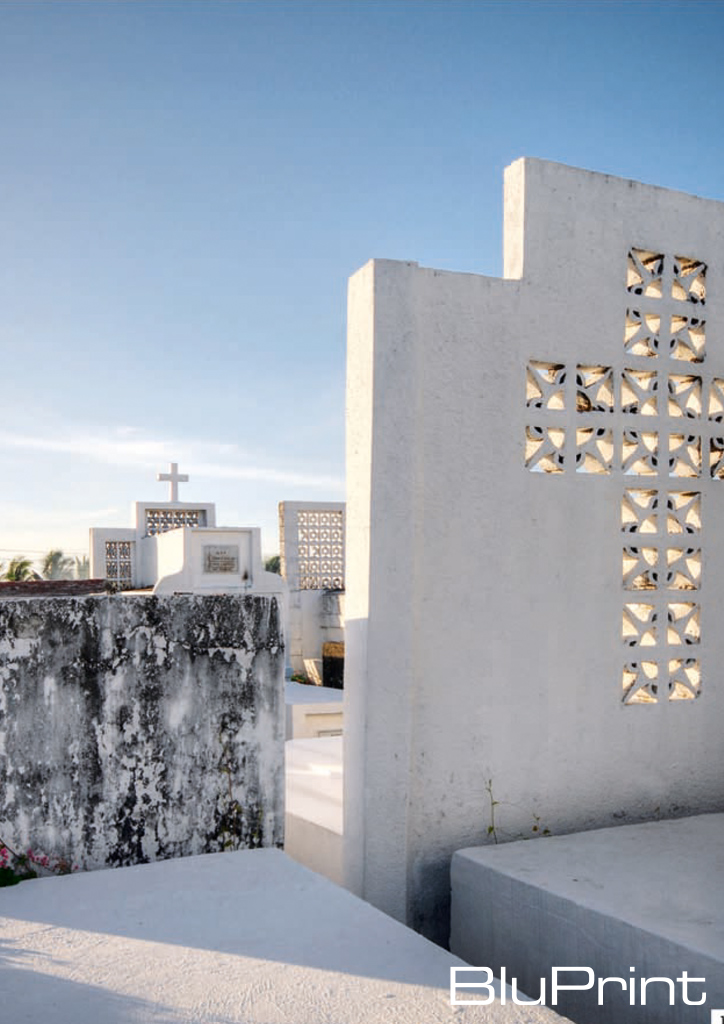

According to Joy Rosal-Sumagaysay in An Art Historical Study of Eight Spanish Colonial Stone Cemeteries in Iloilo: “Back in 2002, the stonework above the capilla entrance collapsed and the other sides, invaded by balete roots, were expected to follow suit. The once breathtaking structure lay in a heartrending, hopeless state. But the people of San Joaquin must love their camposanto so much since a fund drive was begun in 2005. This was initiated by the town’s parish priest, Fr. Manuel Sevilla, and lay leader Eva Cerdea with the full support of their town mayor Ninfa Garin (as of writing). Amazingly, in less than a year, a badly damaged capilla has been rehabilitated, not by external entities but San Joaquinhons themselves living here and abroad. This was not for show. The San Joaquinhons were motivated by their desire to keep sacred the resting place of their kin and to see a landmark of their hometown preserved for future generations.”
READ MORE: Stories in Stone: The cultural legacy of Manila’s oldest cemeteries
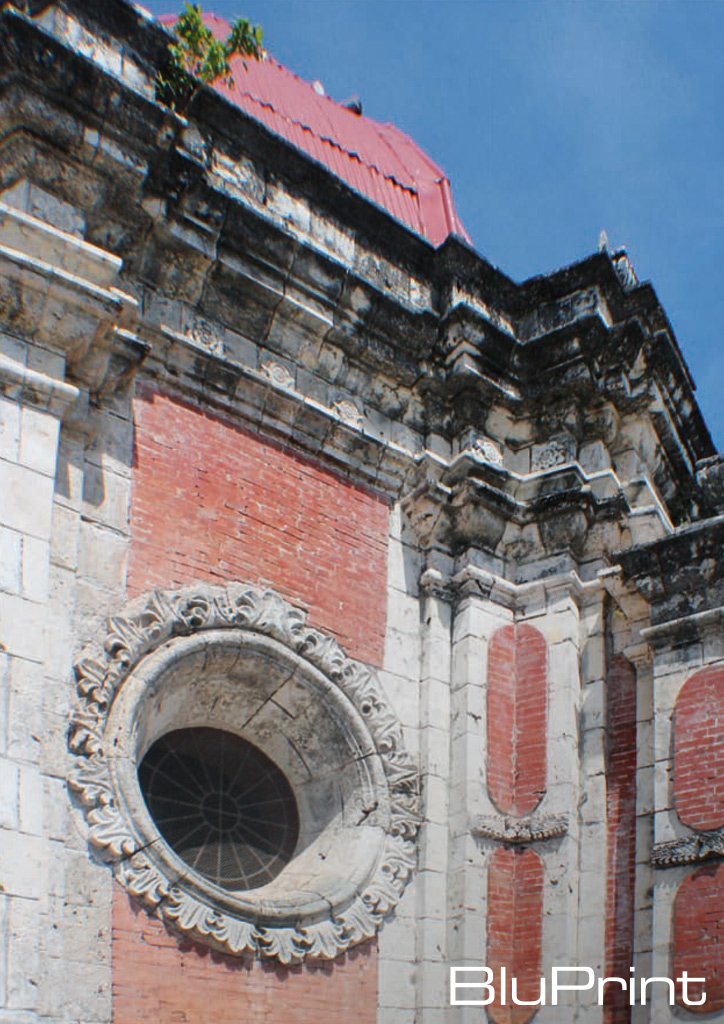
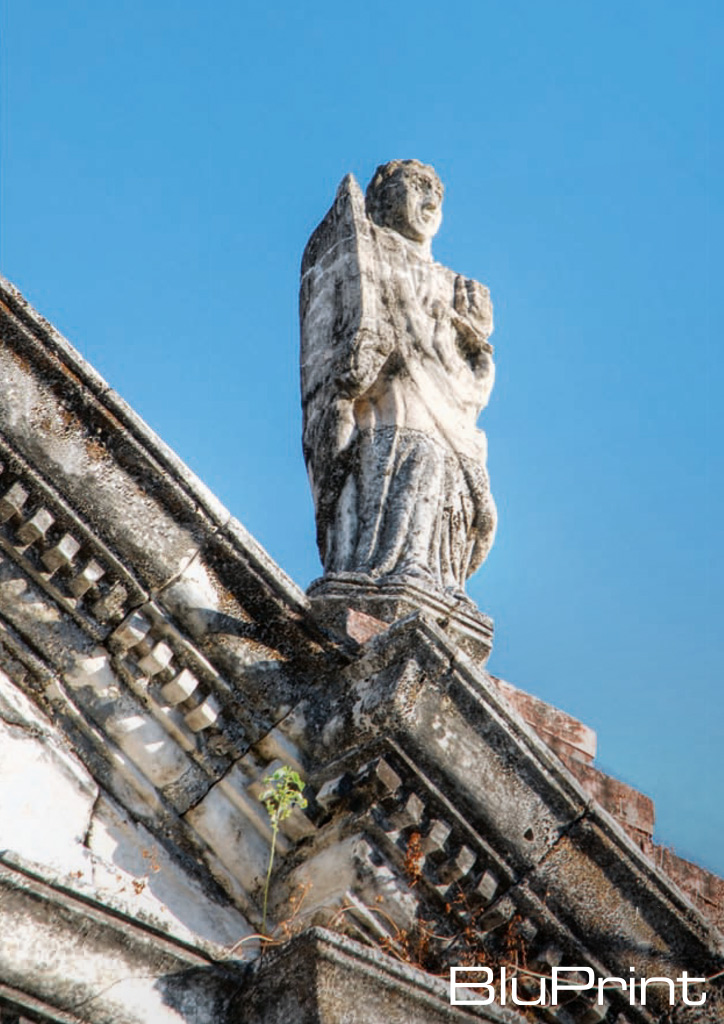
The hexagonal capilla is built of coral stone and red clay bricks. It is topped by a cupola roof and a cross. The structure is striking from the plaza at the bottom of the steps. It dominates the landscape without being interrupted by any hint of modern life; there are no distracting wires, billboards, or new structures in the background of the capilla. This is how the Spanish intended the structure to be viewed and it still creates the desired effect more than 100 years later. However, the real reward for making this stopover on the way to the San Joaquin Church is found upon mounting the steps. It is in the delicate details that the genius of the Oriental Baroque design and the effort of the craftsmen who built the structure can be seen. The curves, floral and leaf, and pointed Hindu-inspired finials complete the graceful capilla.
YOU MIGHT LIKE: Miagao Church’s naked coralline limestone, a mistake for authenticity
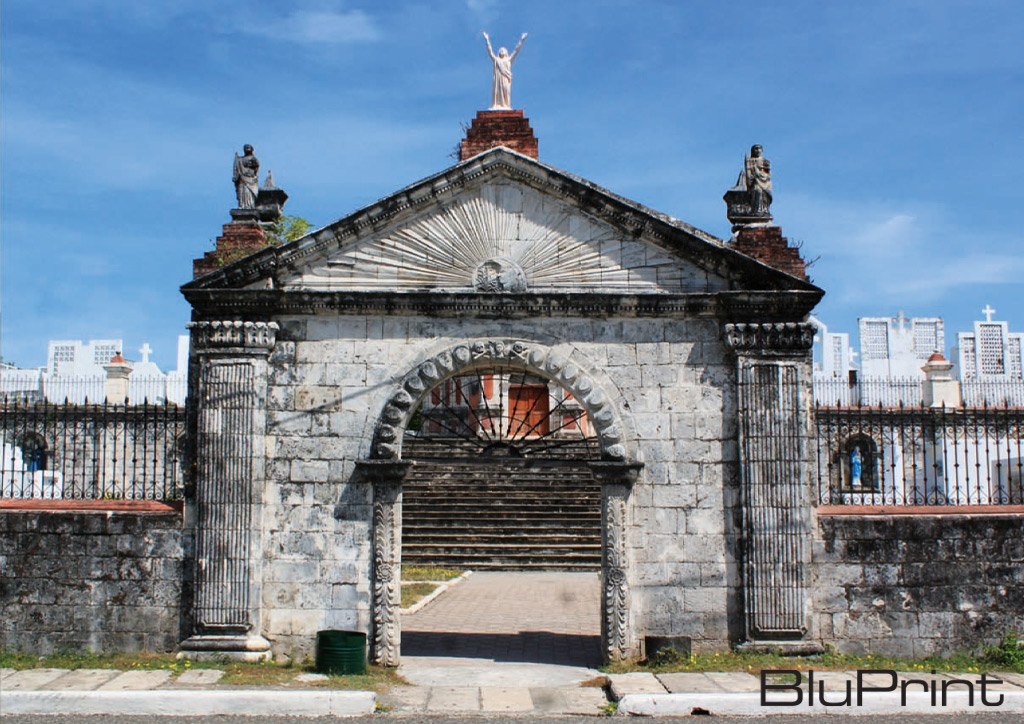
Turning back at the top of the steps, one can see the ocean. This sightline, an integral part of the original design, remains today and strengthens the early morning experience. Often, this Spanish planning is lost as many historic structures in urban areas are surrounded by new commercial buildings, residential high rises, and traffic overpasses. The buildings may remain but their environs have changed dramatically. San Joaquin’s camposanto offers a novel but a more authentic way to experience Spanish-era structure. The experience at San Joaquin Camposanto is holistic in a way that is unique today. It brings the Laws of the Indies, the Spanish planning standards—normally a textbook or museum subject—to new life in this small historic cemetery.![]()

This first appeared in BluPrint Volume 3 2011. Edits were made for BluPrint online.
READ MORE: The grand Beaux-Arts style now even clearer in Iloilo’s Lizares mansion


